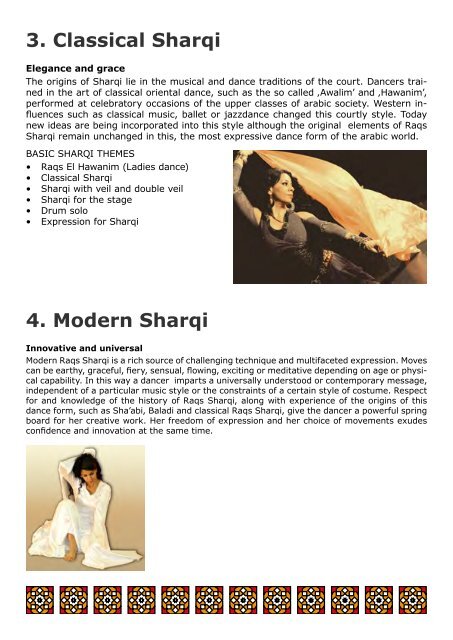You also want an ePaper? Increase the reach of your titles
YUMPU automatically turns print PDFs into web optimized ePapers that Google loves.
3. Classical SharqiElegance and graceThe origins of Sharqi lie in the musical and dance traditions of the court. Dancers trainedin the art of classical oriental dance, such as the so called ‚Awalim’ and ‚Hawanim’,performed at celebratory occasions of the upper classes of arabic society. Western influencessuch as classical music, ballet or jazzdance changed this courtly style. Todaynew ideas are being incorporated into this style although the original elements of RaqsSharqi remain unchanged in this, the most expressive dance form of the arabic world.BASIC SHARQI THEMES• Raqs El Hawanim (Ladies dance)• Classical Sharqi• Sharqi with veil and double veil• Sharqi for the stage• Drum solo• Expression for Sharqi4. Modern SharqiInnovative and universalModern Raqs Sharqi is a rich source of challenging technique and multifaceted expression. Movescan be earthy, graceful, fiery, sensual, flowing, exciting or meditative depending on age or physicalcapability. In this way a dancer imparts a universally understood or contemporary message,independent of a particular music style or the constraints of a certain style of costume. Respectfor and knowledge of the history of Raqs Sharqi, along with experience of the origins of thisdance form, such as Sha’abi, Baladi and classical Raqs Sharqi, give the dancer a powerful springboard for her creative work. Her freedom of expression and her choice of movements exudesconfidence and innovation at the same time.


